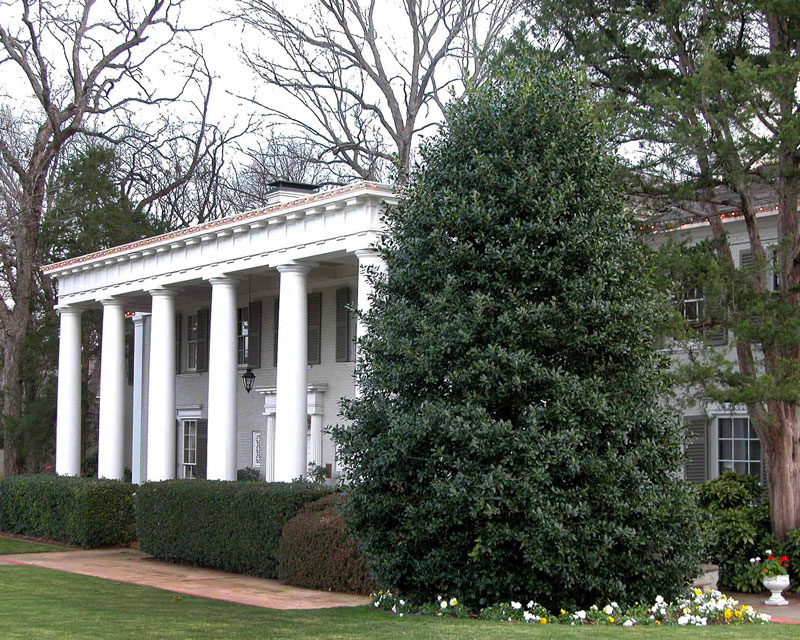The story behind Nellie R. Stevens hollies
I met this beautiful lady, Nellie R. Stevens, the holly, in November 1970. One of the members of my Extension advisory committee, Steve Dodd of Dodd’s Garden Center in Dallas gave Lynn and me one as a housewarming gift for our first home.
“I’m a holly fanatic,” Steve told me. “This will be the best large shrub you can recommend for Texas,” he advised. Here we are half a century later and I’m still quoting his words.

And since November 1970, I’ve never lived in a house that didn’t have Nellie R. Stevens hollies around it.
But it wasn’t until just a few years ago that I learned the back story on this fabulous plant.
Around 1900 Nellie Robinson Stevens of Oxford, Maryland, was visiting the United States National Arboretum. While there, she secretly pocketed three berries from a Chinese holly. The three seedlings produced two male plants and one female plant which grew on her Maplehurst estate grounds for 50 years.

In his book Hollies, the late Fred Galle wrote that in 1952 G.A. Van Lennep observed and admired the hollies. Subsequently he named and introduced them in 1954. He registered them with the Holly Society of America in August 1967. (And Steve Dodd gave me mine in November 1970! Talk about a fast track!)
Van Lennep honored the lady who had grown and nurtured this plant for half a century by naming it for her. One of the male hollies was named “Arthur” for her favorite uncle. The other was named “Maplehurst” after the estate they called home.

What you need to know about this plant…
• Common name: Nellie R. Stevens holly.
• Scientific name: Ilex ‘Nellie R. Stevens’ (hybrid of Ilex cornuta and I. aquifolium).
• Grows to 18 to 25 ft. tall and 12 to 15 ft. wide.
• Well suited to sun or shade but must be kept uniformly moist. That will require watering by hand 2-3 times weekly the first couple of years.
• Evergreen with large, very dark green leaves with 2-4 teeth per margin. Leaves 3 to 3-1/2 in. long and 1 in. wide.
• Pyramidal growth form.
• Large red berries are produced in abundance as plants reach mature size. Fruit persists until eaten by migrating birds (usually robins) in April or early May.
• Requires very little pruning and rarely has insect or disease problems.
